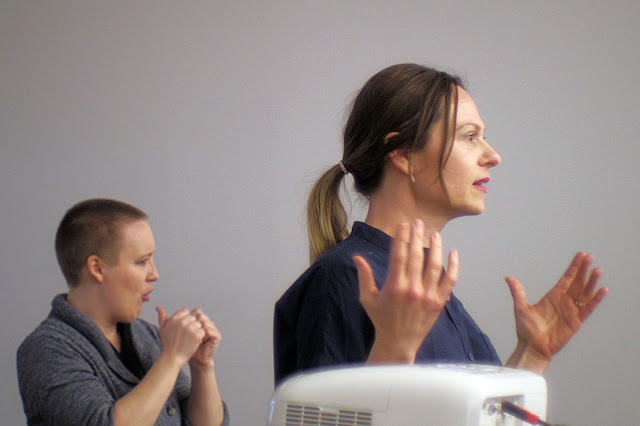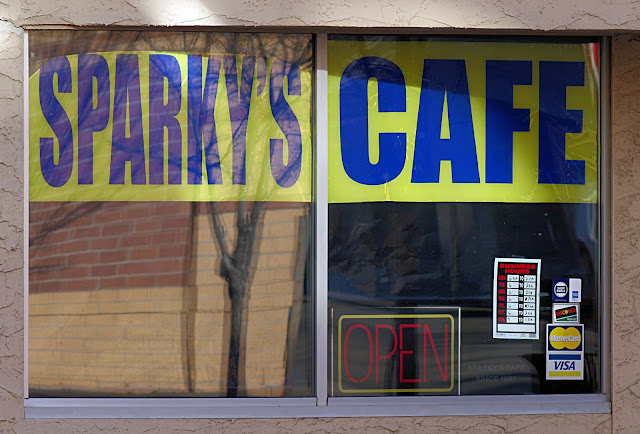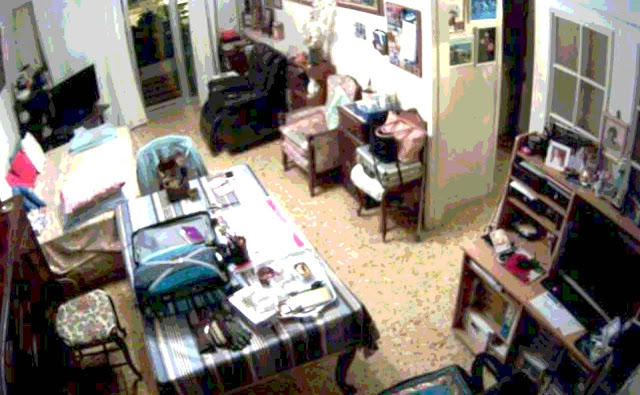
Never one for moderation, my recent trip there triggered a reading binge of San Francisco-based mysteries. I knew that San Francisco is a literary Mecca, but I was unaware of the hundreds (thousands?) of modern mystery novels set there. The variety of its human experience, coupled with its unique architecture and geography in a relatively small area, has inspired creative people for years in both the popular and fine arts. Here is a short “culinary” tour of SF mystery novels I’ve “devoured” recently:
Bill Pronzini’s “nameless detective” series is a modern update to the pulp fiction potboilers of the forties and fifties. His
Femme is terse, fast-moving, and short. Not great literature by any means, but effective. The SF locations are handled well and the plots are basic: no muss, no fuss.
Burger and fries.
Kelli Stanley’s
City of Sharks is a homage to the forties, set on the eve of World War II. Miranda Corbie is a foul-mouthed female private eye with a two-pack a day habit. When a noted publisher is killed a missing manuscript about goings-on at Alcatraz, “the city of sharks,” sets into motion a dizzying merry-go-round of names and places. Several scenes take place at Playland, where even the animatronic “
Laffing Sal” is given a vivid cameo.
This all sounds great, but Kelli’s leaden prose and her fixation on cigarettes (“sticks”) quickly becomes tiresome, as does her constant name-dropping and product placement mentions. I think this book may not have even been edited—at times it reads like fan-fiction.
Meat and potatoes, heavy on the salt.
The next author, Brian Freeman, is thoroughly modern:


These have what I like to call “smart phone plots”, novels that couldn’t exist without Steve Jobs’ blessing/curse of the modern world. Both concern serial killers, both books have lone wolf homicide detective Frost Easton with a personal interest in the case. One problem that is endemic with this genre is that the villain is always possessed with superhuman, almost god-like powers, straining the reader’s belief. These are well-written but gruesome,
The Voice Inside goes over-the-top, bordering on snuff-porn at times.
UPDATE: His latest (2019) book in the series,
The Crooked Street, is a better entry, with a more logical plot and a doozy of an ending.
Gourmet salads with an emphasis on bitter greens.
The Last Ferry Home by Kent Harrington, was a big let down for me. It started out well, Michael O’Higgins is a SFPD homicide detective just returning to duty after a medical leave due to his wife dying in a boating accident some months earlier. O’Higgins also suffers from PTSD from time spent in the military in Iraq. A double murder of two Indian nationals throws him back into the thick of things, probably too quickly, it is obvious that he still has some major issues that impede his investigations. Another complication is that he had met the prime suspect, a beautiful Indian woman, on the ferry a week earlier where they were attracted to each other. This novel is well-written but about halfway though the tone shifts and becomes sleazy, the detective’s horny behavior destroys the mood of the story. Towards the end everything became quite chaotic,
leaving this reader with indigestion.
Jonathan Moore’s first San Francisco book,
The Dark Room, is set in the present and concerns Gavin Cain, a SFPD homicide detective who becomes involved with a blackmail/murder plot involving the mayor as well as events that transpired several years earlier. The two plots converge, leading to an uninspired finish. Moore’s second SF novel,
The Night Market, is a near-future dystopia. Inspector Ross Carver is literally taken on a wild ride through a decaying San Francisco that is even more class-polarized than the present. Moore’s writing can be quite complex. A reader’s reaction to it will depend on
how much baloney they can stomach:

 Someone Always Knows
Someone Always Knows, by Marcia Muller, is one of a long series of Sharon McCone mysteries, a franchise that may have run its course a while ago. Sharon and her husband run a detective agency that is threatened when a dodgy ex-partner turns up with unspecified threats. At the same time she is asked to investigate the ownership status of a crumbling Victorian mansion and, of course, there has to be a relationship between the two events.
The San Francisco locales are handled well, but this is uninspired formula writing, a predictable plot and drab characters. The Weaver has read many of these in the past, evidently they were better then. This is the literary equivalent of
eating in a good restaurant on a bad night, tasty and you won’t starve, but there are much better “dining” options.
Saving the best for last, Cynthia Robinson’s
The Barbary Dogs is whimsical, clever and a literate delight. Max Bravo is a bisexual half-Gypsy opera singer with a spectral grandmother who drops in from time to time to offer him her advice from beyond the grave. Max is surprised when an old friend jumps off the Golden Gate Bridge and he is stuck with the job of settling his affairs. A great supporting cast of characters help/hinder Max on this task which quickly gets out of control, ensnaring him in a century-old mystery when he would prefer frittering his life away eating and drinking and periodically performing in second-rate opera troupes. He keeps trying to avoid this unwanted “quest” but finally submits to fate in a bang-up finish. This is a very funny book, written with a college-level vocabulary. The title is metaphorical, although Max
does have
a dog. The first book in the series,
The Dog Park Club, is just as delicious.
A perfect dessert!
See all the FITK San Francisco posts here.















































